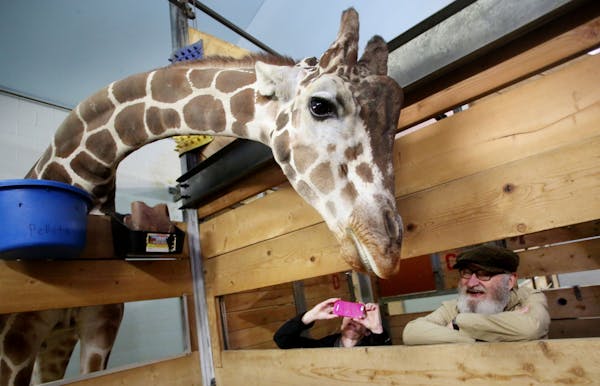The Minnesota Historical Society wants to tell bigger, broader, deeper stories about the people who lived in and around Historic Fort Snelling. It has asked the state Legislature to approve a $34 million bond to revitalize and renovate the historic fort.
If the request is approved, the fort's renovation will be the Historical Society's biggest project since its headquarters, the Minnesota History Center, was built in St. Paul in the 1990s.
"When we're finished, people will see and hear stories they will hear nowhere else in this country," said site manager Tom Pfannenstiel.
The stories wouldn't just be about the lives of, for example, Dred Scott, a slave who was brought to Fort Snelling in 1830 by Army surgeon John Emerson. Scott met and married his wife, Harriet, there and later unsuccessfully sued for his freedom at the U.S. Supreme Court.
Or about the Dakota Indians who lived on the site before the fort was established; the government's treaties with the Dakota and Ojibwe tribes and the repercussions when those treaties were broken; the U.S.-Dakota war of 1862 and its aftermath.
Or the stories of when the fort housed the Buffalo Soldiers, all-black Army regiments; when it was home to the Military Intelligence Service Language School, where Japanese-American soldiers trained as interpreters and translators during World War II, and when it was used as an induction and training center for soldiers during World Wars I and II.
Tourists and students would still learn about all those, but they'd get the larger picture, too, of how those events have affected and shaped the communities today, Pfannenstiel said. To that end, the Historical Society has been holding open houses and listening sessions with Indian groups, African Americans, veterans and neighbors.
The goal, Pfannenstiel said, is to "make this place much more community active and community central. We know we have a lot of work ahead of us but it's going to be very good work with great intent."
The $34 million, plus another $12.5 million in privately raised money, would pay for razing the current subterranean visitors' center, which was built in 1980-81 and is showing its age. About a third of that building is open to the public, including the auditorium, exhibit gallery and museum store. It also houses offices, laboratories, specimens and storage.
The new visitors' center would go into one of the 1904 cavalry barracks building; the red-tile roofed buildings can be seen from Hwy. 55. Its expanded spaces would have room for school programs, community groups and special events.
An 1880s ordnance building would be the "first point of contact for visitors," Pfannenstiel said, for orientation, way-finding and "getting a sense of what the history of the site is all about."
The current visitors' center would become a grassy knoll and gathering center for outdoor activities and concerts.
Pfannenstiel said Gov. Mark Dayton has been supportive of the bonding request and put the full $34 million into his budget request last session. The society received a half-million dollars to do pre-design work and a cultural landscape report. Before the legislative session, the House and Senate bonding committees came to the site, and other legislators have visited.
"We've got pretty good bipartisan support," Pfannenstiel said. "Now the hard work begins when both the House and Senate come up with their bonding budgets.
"We feel like people really know how important this site is, both physically and historically," he said.
If all goes as hoped, the target completion date for the renovations would be spring of 2020, which will mark the fort's bicentennial.
Pat Pheifer • 612-673-7252

Marijuana's path to legality in Minnesota: A timeline

Minnesota to close state park on Iron Range, turn it back into a mine
U.S. Steel won't get exception to pollution rules that protect wild rice, MPCA says

Taste of Minnesota to be enjoyed on the ground and in the air this year

